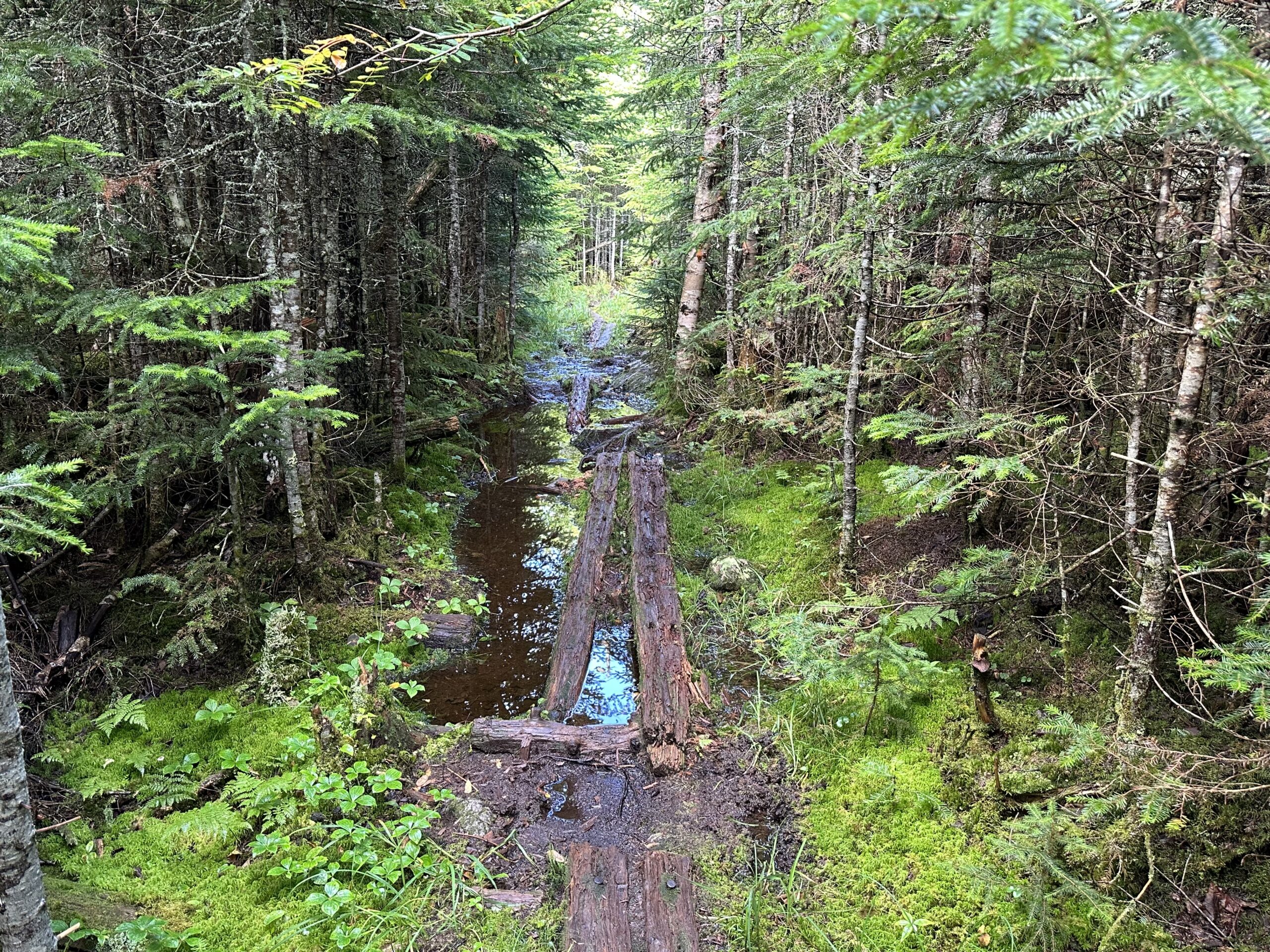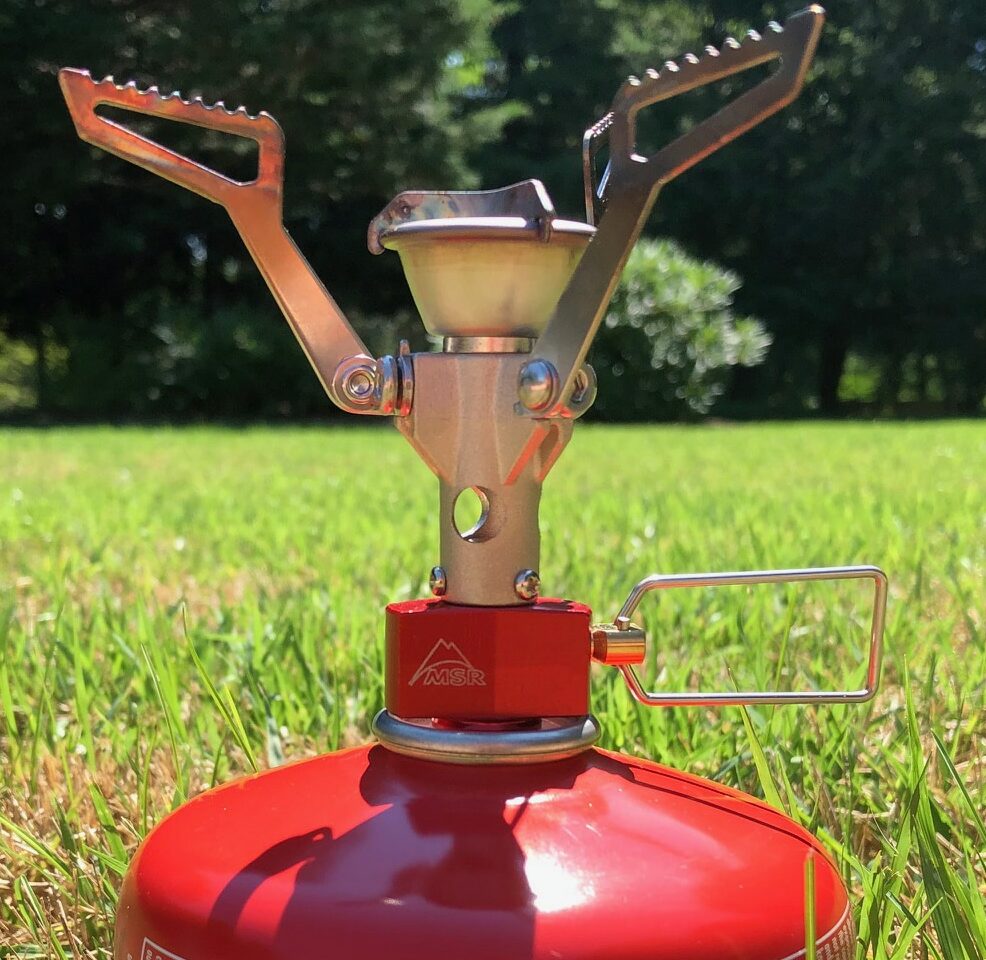When You Encounter Bears – What Do You Do?
When you encounter bears, you need to be able to think quickly and remain calm. Because of this, you should understand bear behavior and educate yourself on what you should do if you encounter bears while hiking or camping.
Table of Contents
- When You Encounter Bears – What Do You Do?
- Table of Contents
- Types of Bears
- When You Encounter Bears – Preventing Encounters
- What to Do When You Encounter a Bear
- Managing Your Food in Bear Territory
- When you Encounter Bears – Protecting Yourself if Attacked
- Resources on Encountering Bears
- When I Encountered a Bear
- Related Posts
Commonly Asked Bear Questions
“What do you do if you meet a bear?”
“Do you carry a gun?”
“Have you ever been attacked by a bear?”
I get all of these questions OFTEN! They are at the top of everyone’s list of concerns, but they have moved closer to the bottom of my list through education.
Frequency of Bear Attacks
Over the past 30 years, I have hiked close to 15,000 miles and have been charged by a bear one time. I’ve crossed paths with a lot of Grizzly bears and even more Black Bears, but only once has a bear behaved aggressively.
The Grizzly you see in the picture at the beginning of this article is that bear.
On a warm Summer’s day near Yellowstone National Park, a young male Grizzly let me know that he was the current Apex predator in no uncertain terms. That was the MOST TERRIFIED I have ever been of an animal in my life, and I learned a few valuable lessons.
Educating Yourself on Hiking with Bears
Knowing how to hike in bear territory and what to do if you meet a bear is essential, and I have learned some lessons over the years. In this article, I’ll discuss the following topics.
- Types of bears you may meet in the United States
- What do when you meet a bear, and it can vary by the bear
- How to protect yourself and your food
Bears are magnificent and beautiful animals, and it is rare for them to attack humans. Regardless, I maintain a very healthy respect for these powerful animals when traveling through their territory.
Knowing there is always some risk when I travel near bears, I have done all I can to educate myself on handling encounters with bears. This article provides my experiences and additional resources you can use to educate yourself.
Types of Bears
There are three species of bears in North America. These include the Brown Bear or Grizzly, Black Bear, and Polar Bear. All species and subspecies are unique to the environments in which they live.
Black Bears
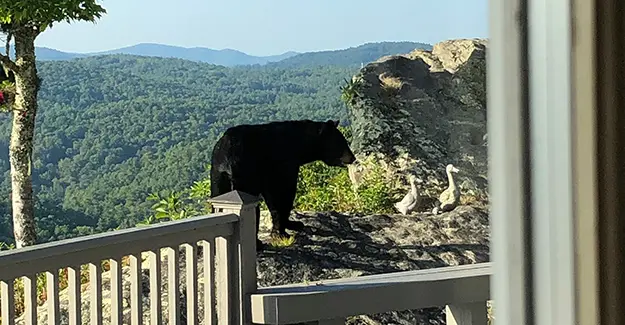

Hikers and backpackers can find bears in 40 of the 50 United States. My family observed these Black Bears in my Father’s back yard. He receives many wildlife visitors at his home in the North Carolina mountains, and Black Bears are his most frequent guests.
Black Bears vary in color and can range from black to brown, and even cinnamon and blonde. Black bears are found in the southeast. The other color variations are more commonly found in the Western United States.
A few more Black Bear facts
- A typical male black bear ranges from 130 -500 pounds, and a female black bear ranges from 90 to 350 pounds.
- Black bears are powerful animals and can sprint at speeds up to 35 miles per hour.
- In cold climates, Black Bears hibernate in the winter, sleeping 4-6 months. They may not hibernate in warmer temperatures like the southeast.
- A Black Bear’s sense of smell is seven times greater than that of a Bloodhound.
- In the Fall, a Black Bear will consume 15,000 – 25,000 calories per day. They typically eat berries, nuts, acorns, insects, vegetables, and carrion (dead animals).
For additional information on Black Bears, check out bearwise.org. This website was created by a group of Black Bear Biologists and offers some great information and educational materials.
Grizzly Bears
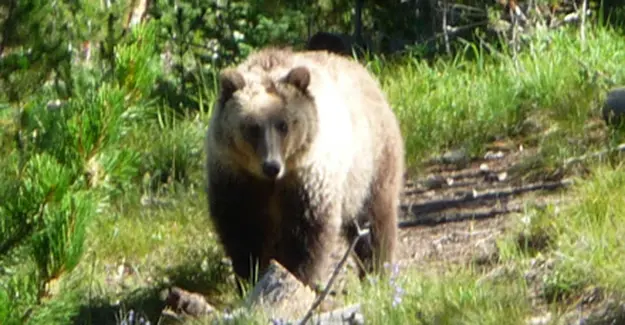

Backpackers and hikers will find Grizzlies in the Northern Rocky Mountains, including Yellowstone and Glacier National Parks, and northwestern Montana and extreme northern Idaho next to Canada. A large population of grizzly bears lives in Alaska and northern Canada.
The grizzly in the picture above is the one that charged me south of Hart Lake in Yellowstone National Park. These are additional pictures I took before the encounter occurred. Not exiting this bear’s territory was one of the lessons I learned.
The Grizzly is a sub-species of a Brown Bear. Grizzlies range in color from light tan (almost white) to very dark brown. They are distinguished by their dish-shaped face, small round ears, and hump between their shoulders. The hump is a mass of muscle that makes Grizzly Bears excellent diggers.
A few more Grizzly facts
- A typical male Grizzly ranges from 700 -1,700 pounds, and a female Grizzly, which is smaller, weighs up to 800 pounds.
- A Grizzly can make short sprints of up to 35 miles per hour.
- Like Black Bears, a Grizzly will also hibernate in the winter, sleeping up to 7 months. The winter is also when the females have their young.
- A Grizzly is most active at Dusk and Dawn.
- A Grizzly is typically solitary in their territory except for a mother and her young. Cubs can stay with their mothers for up to 2-3 years.
When You Encounter Bears – Preventing Encounters
There are several steps you can take to prevent Bear encounters when hiking in bear territory.
- Hike in groups and keep kids and dogs close. Leave earbuds at home and pay attention to your surroundings.
- Double bag food and scraps and don’t burn trash in fire rings.
- Keep dogs leashed at all times, and don’t force a bear to fight.
- Don’t camp near dense forest cover and food sources. Cook at least 100 yards away from your tent.
- Don’t sleep in the clothes you cook in at night.
- Store food in bear-resistant containers, in a car, or ten feet up and away from a tree.
- Carry bear spray and know how to use it.
- Carry bear spray and know how to use it.
What to Do When You Encounter a Bear
It is crucial to understand what to do when you encounter a bear. Bears rarely attack people, and in almost all of my experiences, they have wanted to leave the area quickly.
If you do encounter a Black Bear while hiking, take the following precautions.
- Make yourself known and let the bear know you are a human. Talk in low, calm tones and slowly raise and lower your arms. The bear may stand on its hind legs to get a better look, which usually means it is curious.
- Look big if the bear continues to approach. Stand up on a stump or get to higher ground and hold up a jacket or clothing piece.
- Stay calm. A bear typically does not want to fight. It merely wants to get out of a situation. The bear may bluff charge and turn at the last second while making bear noises – huffing, barking, snapping jaws, yawning, salivating. Continue to talk in low tones. Speaking in quiet, calm tones is not a threat to the bear.
- Pick up children and keep dogs leashed.
- Travel in Groups
- Keep on your pack
- Look large and move to higher ground if possible.
- Move away slowly and sideways, so you don’t trip. The bear can also see you better this way. Remember – DO NOT RUN!
- Let the bear move away and leave it an escape route.
- Do not get between a mother bear and her cubs. Stay as far away from these bear families as possible.
- Bear Spray should be taken out and prepared for firing if you have it.
When You Encounter Bears – Why a Bear Might Attack?
- Surprising a bear is the most common reason.
- Mama bears protecting her cubs.
- Bear watching a kill, or it’s food.
- A bear is seeking food in your camp or a hunter’s fresh kill.
- Predator – a young or injured bear may identify a human as food.
Black Bear vs Grizzly Attack
A bear attack by a Grizzly and a Black Bear is not the same. When a Black Bear attacks – DO NOT PLAY DEAD. Fight the bear with whatever you have on-hand. Hit it around the head, face, eyes, and muzzle.
If a Grizzly attacks, PLAY DEAD, protecting your head and torso. Fighting back will usually intensify the attack. If the attack does not stop, then you should fight back for your life, using whatever weapon you have and beating it around the head, face, eyes, and muzzle.
I want to emphasize additional points on predatory bear attacks. If a bear attacks you at night, in your camp, or is stalking you, there is a good chance it is a predatory attack. In these situations, you always need to fight back aggressively.
Managing Your Food in Bear Territory
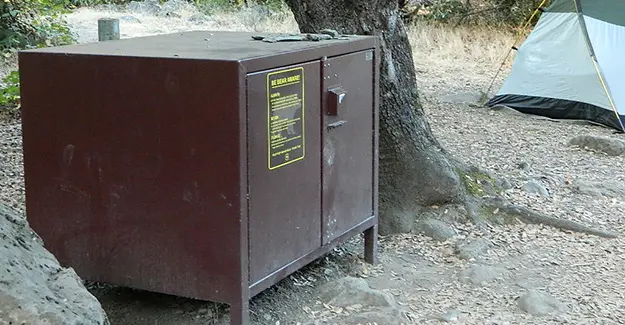


There are several methods you can use when backpacking in bear territory. These protect your food, and ultimately the life of the bear.
- Metal Food Lockers
- Food Cables or Poles
- Bear Canisters/Vaults
- Food Bags
Metal Food Lockers
Metal Food Lockers are often found in designated camping areas, especially if there is bear activity. They are large metal lockers that allow you to lock your food inside. The only drawback is that if they are full, you might not fit your food inside.
Food Cables or Poles
Most National Parks have food cables (i.e., Smokey Mountains) or food poles (i.e., Yellowstone National Park). These allow you to hang your food out of the reach of the bears. If these are not available, you can also hang your food from trees. There are several methods you can use to hang your food bag.
Bear Canisters and Vaults
Some Parks require Bear Cannisters or Vaults. These are typically rigid plastic containers with screw-on lids that weigh 2-3 pounds.
I was required to carry one in some High Sierras sections when I hiked the Pacific Crest Trail. I took the Bear Vault BV500. You can get a large fine if a Ranger finds you without your Cannister. Although heavy and a bit of a pain in the Butt, it did make an excellent chair.
Bear Bags
Food Bags are an alternative to Food Cannisters if you decide to carry something to protect your food. They are made of high-density polyethylene, and some have an aluminum liner to protect against punctures.
It would help if you considered using an odor-proof plastic bag or Opsack to place in the Bear Bag. The Bear Bag itself is not odor proof.
Check Park Regulations before deciding on what to carry. Most Parks require Cannisters. Bear Bags are approved by the Interagency Grizzly Bear Committee (IGBC).
When you Encounter Bears – Protecting Yourself if Attacked
There are several ways to protect yourself if attacked by a Bear.
- Play Dead
- Not Playing Dead
- Bear Spray
- Gun
Play Dead
If you have no weapon, such as Bear Spray or a Gun, playing dead with a Grizzly is the most effective method to minimize injury.
- Keep on your backpack to protect your back and torso.
- Lay on your stomach
- Put your hands behind your neck with your elbows next to your head.
- Do not fight back unless the bear does not stop, or it is a predatory attack.
- Wait a few minutes before leaving so the bear does not attack again.
Not Playing Dead
Do not play dead with a Black Bear. If they attack you, then you need to fight back as aggressively as you can.
- Try to get to a secure location like a building or car.
- Make yourself look as big and scary as possible.
- Use whatever weapons you have – sticks, rocks, etc.
- Beat the bear around the head, face, eyes, muzzle, etc.
If a bear is stalking you or attacks you in your tent, fight back. This type of attack is a predatory attack and not defensive. It does not matter what kind of bear is attacking – FIGHT!
Bear Spray
If you are going to use Bear Spray, then make sure you know how to use it. Bears may attack unexpectedly, and you will have seconds to use the spray.
Make sure the Spray is EPA approved and that you practice before going into bear territory. The National Park Service (NPS) has a video on how to use Bear Spray.
The NPS also provides tips on how to use the spray.
- Please don’t keep the bear spray in your backpack, but on your person where you can quickly and easily grab it!
- Put up a large cloud between you and the bear.
- Practice! You can purchase cans of inert spray, so practice drawing and spraying in multiple conditions – upwind, downwind, no wind, distances, etc.
- Bear Spray is not insect repellent. Don’t apply it to people or equipment.
- No Bear deterrent is 100% effective. Make sure you know how to hike in bear country.
- Bear spray cans may explode if stored over 120 degrees Fahrenheit.
- Check your Bear Spray can and make sure it has not expired.
Guns
There is a lot of discussion around carrying guns or using bear spray, and there are arguments for both forms of deterrence. I have no handgun skills and am highly doubtful I could aim and shoot a large bear in the time it took it to reach me.
When I travel in Grizzly Bear territory, I carry Bear Spray. I am comfortable in my ability to use it effectively if needed.
Resources on Encountering Bears
There are a lot of useful resources and reference materials on how to handle Bear Encounters. I used for this article, and I’ve listed these, along with some additional sources below. I’ve also provided a link to purchase educational and reference materials.
- Staying Safe Around Bears from the National Park Service
- Bear Safety For Hunters from Alaska Department of Fish & Game
- Live Responsibly With Black Bears from BearWise
- Bear Encounters from Get Bear Smart Society
- Bear Safety Tips from UDAP
When I Encountered a Bear
If interested, you can read my Grizzly Bear Encounter Post. I wrote this post after hiking the Continental Divide Trail in 2009. I have learned a lot about hiking and backpacking safely with bears since that hike.
Related Posts

